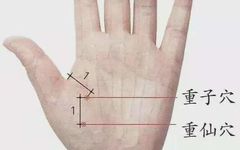Master He Puren of Traditional Chinese Medicine states: “We believe that while ensuring clinical effectiveness, we should minimize the number of acupuncture points used, which reduces the patient’s suffering. Additionally, the technique of needling must be agile, which is also crucial for minimizing patient discomfort. This approach not only benefits the patient but also aids in summarizing clinical efficacy, allowing for the discovery of effective points and their relative specificity.”
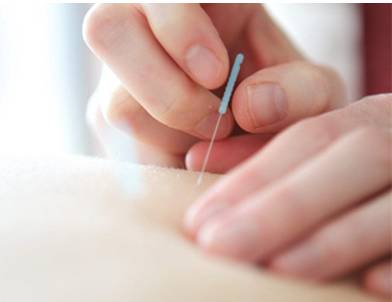
1、Common Cold Point: Dazhui (Great Vertebra). Operation: Bloodletting followed by cupping, moxibustion. Used for colds, influenza, or prevention.
2、Cough Point: Kongzui (Most Hollow). Operation: Quick lifting, inserting, and twisting, 1-1.5 inches. Indications: Cough, hemoptysis, bronchial asthma. Kong means hole, and zui means many. This point is a key point of the lung meridian.
3、Hemoptysis Point: Kongzui (Most Hollow). Operation: Same as above, primarily draining method, 1-1.2 inches. Indications: Cough, hemoptysis.
4、Bronchitis Point: Feiyu (Lung Shu). Located 1.5 inches lateral to the spinous process of the third thoracic vertebra. Operation: 1 inch. Insert at an angle towards each vertebra, twisting. Indications: Bronchitis, cough, hemoptysis, pulmonary tuberculosis.
5、Asthma Point: Yujie (Fish Stream). Operation: 1 inch. Insert towards Laogong (Palace of Labor), twisting. Indications: Asthma, bronchitis.
6、Fever-Reducing Point: Quchi (Pool at the Bend). Operation: 1.5 inches. Lift and insert, needle once every 5 minutes, leave for 30 minutes. If fever persists, perform bloodletting at Dazhui. Indications: Fever, cold-induced fever, high fever convulsions.
7、Chest Distress Point: Shanzhong (Central Chest). Operation: 1.5 inches. Insert along the sternum, accompanied by palpitations and shortness of breath, add Neiguan (Inner Pass). Indications: Chest distress, chest pain, asthma, liver qi stagnation.
8、Pneumonia Point: Lieque (Broken Sequence). Insert at an upward angle 0.4-0.8 inches, twisting, needle once every 5 minutes, accompanied by chest pain and fever, add Feiyu, Quchi, etc. Indications: Pneumonia, pulmonary tuberculosis, emphysema, asthma.
9、Heart Regulation Point: Neiguan (Inner Pass). Operation: 1 inch. Directly insert, twisting, needle once every 5 minutes. Indications: Chronic tachycardia, bradycardia, chest distress, emergency syndrome, angina pectoris.
10、Coronary Heart Disease Point: Jiexi (Stream of the River). Directly below 2.5 inches, between the second and third metatarsal bones. Operation: 1 inch. Directly insert 0.5-0.8 inches, twisting, needle once every 2-3 minutes. Indications: Coronary heart disease, chest distress, angina pectoris, myocardial infarction.
11、Emergency Point: Renzhong (Human Center). Operation: 0.5 inches, insert at an upward angle, draining method, leave for 5-10 minutes after awakening. Indications: Coma, shock, fainting, pediatric convulsions, aphasia, heat stroke, etc.
12、Collapse Point: Renzhong (Human Center). Operation: Insert 2-3 minutes, twisting, leave for 15-20 minutes. Indications: Collapse, coma, fainting, mania, shock, etc.
13、Heat Stroke Point: Shaoshang (Lesser Merchant). Operation: Insert 0.3-0.5 minutes, twisting, draining method, leave for 10-15 minutes, if fever and sweating, can bleed 2-3 drops. Indications: Heat stroke, stroke coma.
14、Spirit Weakness Point: Shenque (Spirit Gate). Operation: Directly insert 0.5-1 inch, balanced supplement and draining method, twisting, leave for 20 minutes, cupping for 10 minutes after removing the needle.
15、Neurosis Point: Chengshan (Mountain of Acceptance). Operation: Insert 2.5 inches, balanced method, accompanied by palpitations and shortness of breath, add Neiguan, Shanzhong. Indications: Neurosis.
16、Psychiatric Disorder Point: Baihui (Hundred Meetings). Operation: Insert at an angle 0.5-0.8 inches, draining method. Indications: Functional psychiatric disorders.
17、Epilepsy Point: Yaoqi (Waist Wonder). Operation: First insert, then advance 2.5 inches upward, twisting and lifting.
18、Awakening Point: Tingshen (Listening Sensitivity). Operation: Insert 0.5-0.8 inches, strong stimulation. Indications: Unclear consciousness, fainting.
19、Organ Prolapse Point: Baihui (Hundred Meetings). Operation: Insert and moxibustion for 20 minutes. Indications: Prolapse of the stomach, kidney, uterus, rectum, etc.
20、Aphasia Point: Renzhong (Human Center). Operation: Insert 0.8 inches, upward angle, leave for 25 minutes, strong stimulation. Indications: Hysterical aphasia or functional aphasia.
21、Hysterical Paralysis Point: Yongquan (Gushing Spring). Operation: 1-1.5 inches, twisting for 3 minutes, test walking. Indications: Hysterical paralysis.
22、Facial Spasm Point: Qianliao (Cheek Ridge). Operation: Directly insert 0.5-1 inch, draining method. Indications: Facial muscle spasm, facial twitching.
23、Facial Paralysis Point: Xiaguan (Lower Pass). Operation: Directly insert 1-1.2 inches, draining method. Adding Yuwai (Fish Waist), Sibai (Four Whites), and Jiachuan (Cheek Car) is better. If there is excess heat, bleed at the ear tip on the affected side; if there is excess cold, add Yujie, Sibai, and Taiyang. Indications: Facial nerve paralysis, facial neuritis.
24、Hemiplegia Point: Shuigux (Rate Valley). Insert on the healthy side 0.5-1 inch, flat insertion, lifting and twisting. Indications: Hemiplegia from stroke, migraine.
25、Cerebral Ischemia Point: Fengchi (Wind Pool). Operation: Insert 2 inches, twisting, leave for 30 minutes. Indications: Insufficient blood supply to the brain.
26、Frequent Urination Point: Taixi (Great Stream). Operation: Insert 0.5-1 inch, flat method. Indications: Frequent urination or increased urination frequency.
27、Blood Sugar Lowering Point: Yiyu (Pancreas Shu). Operation: Insert at an angle 1.5 inches, draining method, leave for 30 minutes, add Sanyinjiao (Three Yin Intersection), Pishu (Spleen Shu), Zusanli (Leg Three Miles), Shenmen (Spirit Gate), and Shenshu (Kidney Shu). Indications: Diabetes, high blood sugar.
28、Blood Lipid Lowering Point: Fenglong (Abundant Dragon). Operation: Directly insert 2 inches, lifting and draining method, leave for 30 minutes. Indications: Hyperlipidemia, obesity.
29、Trigeminal Neuralgia Points: Yuwai, Sibai, Chengjiang (Receiving River). Insert from below into Yuwai 0.3-0.5 inches, Sibai at an upward angle 0.5-0.8 inches, both using twisting technique, can add Xiaguan. Indications: Trigeminal neuralgia and brow bone pain.
30、Occipital Neuralgia Point: Fengchi (Wind Pool). Operation: Insert 2 inches, lifting and draining, draining method.
31、Frontal Headache Point: Zhongwan (Middle of the Abdomen). Operation: Directly insert 1.5 inches, draining method.
32、Migraine Point: Taichong (Great Surge). Operation: Insert at an angle towards the heel 1.2 inches, draining method.
33、Occipital Headache Point: Zhiyin (Reaching Yin). Operation: Insert 0.3 inches.
34、Insomnia I Point: Daling (Great Tomb). Operation: Insert at an angle towards the palm 1 inch, twisting or lifting. Indications: Insomnia caused by excessive thinking, mental insomnia, solid syndrome, drain Daling.
35、Insomnia II Point: Fengchi (Wind Pool). Operation: Insomnia caused by brain nerve dysfunction, cerebral arteriosclerosis, hypertension, cervical spondylosis, insufficient blood supply to the brain.
36、Urinary Tract Point: Zhibian (Zhi Border). Operation: Directly insert 2.5-3 inches, if for pyelonephritis can add Shenshu, Yinlingquan (Yin Mound Spring), if for cystitis can add Pishu, Sanyinjiao, if for urethritis can add Zhongji (Central Pole), Sanyinjiao.
37、Blood Pressure Lowering Point: Quchi (Pool at the Bend). Operation: Hypertension with hyperlipidemia can add Fenglong, if caused by nephritis then add Sanyinjiao.
38、Malaria Point: Malaria Gate. Operation: Insert 1 inch, twisting, draining method, can add Shenzhu (Body Column) point for bloodletting.
39、Hyperthyroidism Point: Ashi (As It Is). Operation: Directly insert 0.5-1 inch, twisting, draining method, protruding eyes can add Jingming (Bright Eyes), Sibai, Yuwai, Sizhukong (Silk Bamboo Hollow), palpitations and shortness of breath can add Neiguan, Shenmen, weight loss and sweating can add Sanyinjiao, Zusanli. Indications: Hyperthyroidism.
40、Stomach Pain Point: Zhongwan (Middle of the Abdomen). Operation: Directly insert 1.5 inches, twisting, flat method. Indications: Stomach pain, abdominal distension, hiccups.
41、Gastritis Point: Yintang (Hall of Impression). Operation: Insert downward at an angle 5-8 minutes, lifting and twisting. Indications: Acute and chronic gastritis, gastric distension.
42、Diarrhea Point: Shenmai (Shen Pulse). Operation: Directly insert 0.5 inches, twisting, flat method, add moxibustion. Indications: Acute diarrhea, acute enteritis, chronic colitis.
43、Vomiting Point: Between Neiguan and Daling. Operation: Directly insert 1 inch, twisting, strong stimulation. Indications: Gastrointestinal discomfort and neurogenic vomiting.
44、Dysentery Point: Dachangshu (Large Intestine Shu). Insert towards the spine 1.5 inches, twisting. Indications: Dysentery, enteritis.
45、Constipation Point: Zhigou (Branch Ditch). Operation: Directly insert 1.5 inches, draining method.
46、Smoking Cessation Point: Lieque (Broken Sequence). Operation: Insert at an upward angle 0.5 inches, twisting, add moxibustion.
47、Nephritis Point: Sanyinjiao (Three Yin Intersection). Operation: Directly insert 2.5 inches, draining method, can add Shenshu, Zusanli, Guanyuan (Gate of Origin). Indications: Acute and chronic nephritis.
48、Acute Abdomen Point: Zusanli (Leg Three Miles). Operation: Insert 2 inches, twisting, draining method.
49、Gallbladder Pain Point: Gallbladder. Operation: Directly insert 1.5 inches, quick twisting 200 times/minute. Indications: Acute and chronic cholecystitis, gallstones, gallbladder colic, gallbladder ascaris.
Top Ten Instantaneous Acupuncture Techniques
1、Heavy Child Point for Chronic Back Pain, Instantaneous Effect, No Other Points Can Compare
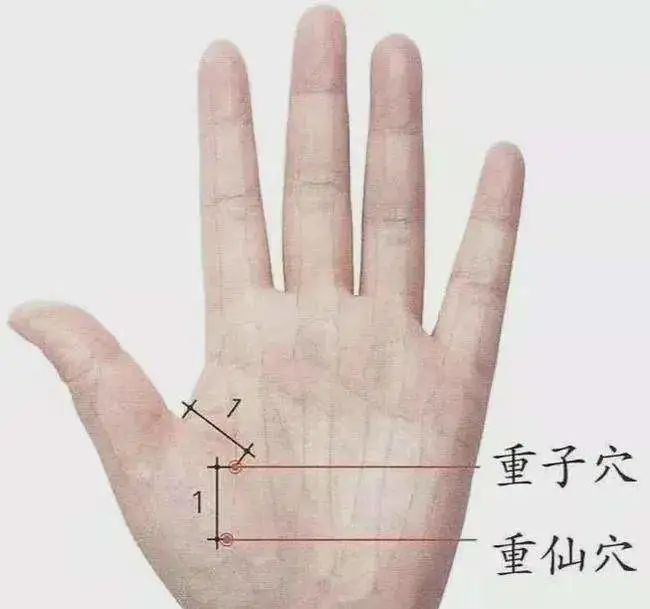 Location: One inch below the tiger’s mouth of the palm, between the metacarpal bones of the thumb and index finger, connected to the Daba (Great White) point on the back of the hand. Anatomy: Contains the radial nerve, radial artery, and branches of the lung nerve. Point Selection: Palm facing up, the point is located one inch below the metacarpal bones of the thumb and index finger, can connect with Daba point. Meridian: Enters the lung meridian. Point Nature: Dispels wind and releases the exterior, clears and drains lung qi. Indications: Pneumonia, lung cancer, emphysema, cold, cough, asthma, palpitations, fever reduction, laryngitis, back pain, chest pain, knee pain. Needling Method: Directly insert 1-2 inches. For pediatric conditions, using a three-edged needle for bloodletting is particularly effective. Sensation: Aching and distending pain. Explanation: The Heavy Child and Heavy Immortal points are close to the traditional fourteen meridian lung meridian, thus can treat lung-related diseases like Yujie.
Location: One inch below the tiger’s mouth of the palm, between the metacarpal bones of the thumb and index finger, connected to the Daba (Great White) point on the back of the hand. Anatomy: Contains the radial nerve, radial artery, and branches of the lung nerve. Point Selection: Palm facing up, the point is located one inch below the metacarpal bones of the thumb and index finger, can connect with Daba point. Meridian: Enters the lung meridian. Point Nature: Dispels wind and releases the exterior, clears and drains lung qi. Indications: Pneumonia, lung cancer, emphysema, cold, cough, asthma, palpitations, fever reduction, laryngitis, back pain, chest pain, knee pain. Needling Method: Directly insert 1-2 inches. For pediatric conditions, using a three-edged needle for bloodletting is particularly effective. Sensation: Aching and distending pain. Explanation: The Heavy Child and Heavy Immortal points are close to the traditional fourteen meridian lung meridian, thus can treat lung-related diseases like Yujie.
2、Kidney Point for Frequent Urination
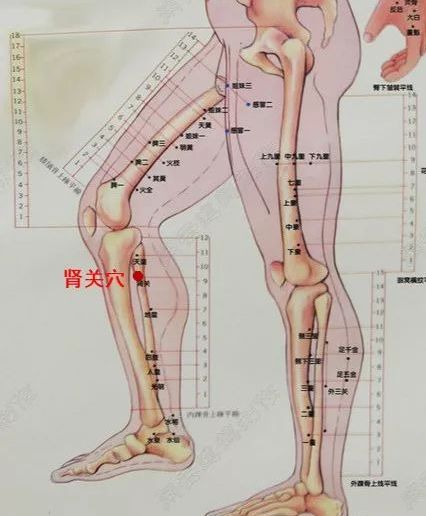
Location: Kidney Point is located 1.5 inches below the Tianhuang point.
Indications: Excess stomach acid, regurgitation, strabismus, astigmatism, anemia, epilepsy, neurosis, brow pain, nasal bone pain, dizziness.
Needling Method and Application: 0.5 to 1 inch. Supplement the kidney deeply 2 inches. Treat excess stomach acid and regurgitation with Tianhuang point as a paired needle.
3、Wood Point for Goose Foot Disease
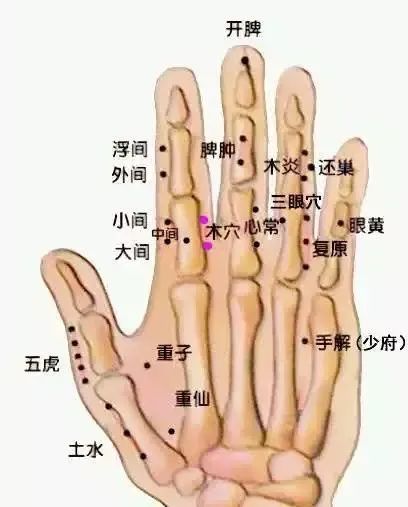
Wood Two Point
Location: Three-tenths of the way in from the center of the first segment of the index finger on the palm side.
Anatomy: Contains the inherent palmar digital nerve and liver nerve.
Point Selection: Palm facing up, the point is located three-tenths of the way in from the center of the first segment of the index finger.
Meridian: Enters the liver meridian.
Point Nature: Soothes the liver, regulates qi, invigorates blood, and dispels wind.
Indications: Irritability, excessive activity, shoulder tightness, right flank pain, neck tightness, high cholesterol, stomach distension.
Needling Method: 0.5 inch needle, directly insert 2-4 tenths.
Needling Sensation: Localized aching and distending pain.
Application: Using both hands for point selection yields better results.
Explanation:
(1) In the works of Dong Gong, the Wood Point has a limited range of indications, while Master Hu expanded its range. Lai Zhu in his book referred to the Wood Point as the cold point, stating that it is effective for tearing, sweating, stopping sweating, and colds. He claimed that the Wood Point can stop cold tears in a moment, but I believe that to treat cold tears, it is better to pair it with the three-pronged point, Linggu, Daba, and add the cold point for better results.
(2) The Wood Point corresponds to the liver area in the holographic projection of human organs, hence its name. Therefore, selecting this point is particularly effective for treating right flank pain.
Wood One Point
Location: Two and a half tenths below the center of the first segment of the index finger on the palm side.
Anatomy: Contains the inherent palmar digital nerve and liver nerve.
Point Selection: Palm facing up, the point is located two and a half tenths below the Wood Two Point.
Meridian: Enters the liver, stomach, and lung meridians.
Point Nature: Drains liver and gallbladder heat, opens stagnation and clears orifices.
Indications: Bitter mouth, tinnitus, excessive liver fire, irritability, shoulder pain, right flank pain, neck tightness, high cholesterol, stomach distension.
Needling Method: 0.5 inch needle, directly insert 2-4 tenths.
Needling Sensation: Localized aching and distending pain.
Application: Same as Wood One Point.
Explanation:
(1) The depth of the needle affects the meridian it enters. The Wood One, Wood Two, and Wood Three points are listed by Master Hu. In Dong Gong’s book, there are two diagrams of Wood Points, but only one Wood Point is mentioned in the text. These three points can use a 0.5 inch needle, shallowly inserting one-tenth into the lung meridian, and deeply inserting two to four tenths into the liver and stomach meridians. This is a unique feature of Dong’s extraordinary points, often varying with the depth of the needle.
(2) There are three Wood Points, and using all three needles together in a reverse horse needle method for right flank pain is particularly effective. It is also effective for dry mouth and excessive heat.
Wood Three Point
Location: Two and a half tenths above the center of the first segment of the index finger on the palm side.
Anatomy: Contains the inherent palmar digital nerve and liver nerve.
Point Selection: Palm facing up, the point is located two and a half tenths above the Wood Two Point.
Meridian: Enters the liver, stomach, and lung meridians.
Point Nature: Drains liver and gallbladder heat, opens stagnation and clears orifices.
Indications: Bitter mouth, tinnitus, excessive liver fire, irritability, shoulder pain, right flank pain, neck tightness, high cholesterol, flank pain, stomach distension and pain.
Needling Method: 0.5 inch needle, directly insert 2-4 tenths.
Needling Sensation: Localized aching and distending pain.
Application: Wood One, Wood Two, and Wood Three points can be used clinically, any one or two points can be selected for use. Using a three-edged needle for bloodletting is particularly effective for treating gastrointestinal distension and flank pain. Using both hands for point selection is not prohibited.
Explanation: Lai Zhu in his experience with Wood Points stated that they can treat eyes that easily tear and are dry. Additionally, Wood Points can stop external wind pathogens from causing skin itching, as this point enters the liver meridian, which connects to the eyes. Therefore, as Lai Zhu stated, it can treat the above symptoms. I believe that if the Wood Point is paired with Dong’s extraordinary point, the three Huang points, the effect will be even better.
4、Gynecological Points for Infertility
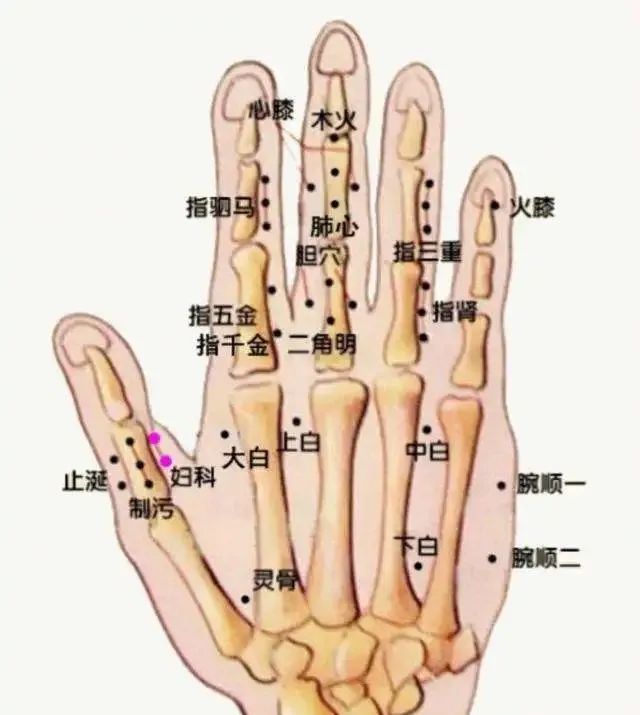
Five Gynecological Points
Location: On the back of the hand, the outer side of the first segment of the thumb, starting from the transverse wrist crease, every two tenths up is one point, totaling five points.
Anatomy: Contains the inherent palmar digital nerve superficial branches, uterine nerve, and six fu organs nerves.
Point Selection: On the back of the hand, at the outer side of the first segment of the thumb, 2.5 tenths from the center, every two tenths up to the second segment transverse crease, totaling five points.
Meridian: Enters the Ren and Du meridians.
Point Nature: Regulates the Ren and Du meridians, suitable for unblocking the lower jiao.
Indications: Uterine tumors, uterine cancer, uterine inflammation, ovarian inflammation, infertility, dysmenorrhea, irregular menstruation, excessive or insufficient menstruation, vaginal pain and swelling, red and white discharge, vaginal wind, postpartum wind syndrome (wind flash syndrome).
Needling Method: 0.5 inch needle, directly insert 2-3 tenths. Or use a three-edged needle for shallow bloodletting.
Needling Sensation: Localized aching and distending pain.
Application: The five gynecological points are special points for various women’s diseases. Clinically, any two or three points can be selected for needling, with instantaneous effects.
Explanation:
(1) The five gynecological points are the main points for treating various gynecological diseases and are essential points for gynecological treatment. They can be combined with other points such as Fengchao, Mufu, and other gynecological points. This point combined with Menjin point is particularly effective for treating dysmenorrhea.
(2) In Dong Gong’s book, there are two points, Master Hu added three points, totaling five points. I believe that in this area, selecting three points for the reverse horse method is sufficient.
5、Sima Point for Allergic Rhinitis and Various Skin Diseases.

Finger Sima Point
Location: Sima Two Point—On the back of the hand, three-tenths outward from the center of the second segment of the index finger.
Sima One Point—Two and a half tenths below Sima Two Point.
Sima Three Point—Two and a half tenths above Sima Two Point.
Anatomy: Contains the median nerve superficial branches and lung branch nerves.
Point Selection: Same as the location.
Meridian: Enters the lung meridian.
Point Nature: Dispels wind and releases the exterior, harmonizes qi and blood.
Indications: Skin diseases, facial blemishes, freckles, rhinitis, tinnitus, otitis media, chest pain, pleurisy.
Needling Method: Directly insert 1-2 tenths.
Needling Sensation: Localized aching and distending pain.
Explanation: The finger Sima point is on the same line as the finger Wujin and Qianjin points. The Wujin point is on the back of the first segment of the index finger, while the Sima point is on the second segment. Dong Gong’s original text states to open two tenths, while Master Hu states three tenths, which is the difference between the two.
Experience: The Sima point has both hand and foot Sima points, both of which enter the lung meridian and are the main points for regulating qi, primarily treating skin-related issues. They are effective for various skin diseases, acne, and blemishes.
Point Pairing:
(1) For treating blemishes, pair Sima point with the three Huang points, Tongguan, and Tongshan for better results.
(2) For treating red, swollen, large acne, this point can be paired with the three heavy points.
Needle and upper three Huang points for various bone spurs.
6、Tongguan, Tongshan, Tongtian combined with bloodletting needle method for treating viral myocarditis.
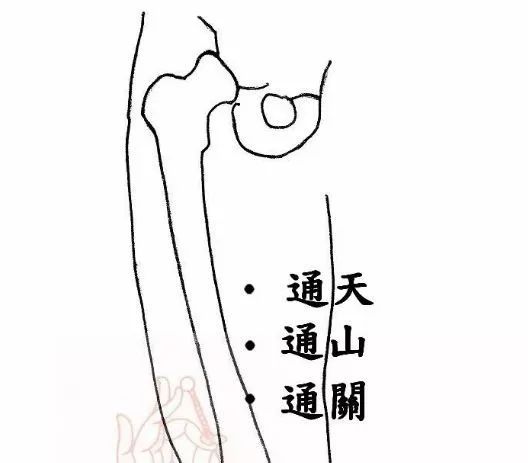
Tongguan Point:Located on the midline of the thigh, 5 inches above the knee crease.
Tongshan Point:Located on the midline of the thigh, 2 inches above the Tongguan point.
Tongtian Point:Located on the midline of the thigh, 4 inches above the Tongguan point.
Indications: Heart disease, pericarditis (pain in the heart area), pain on both sides of the heart, rheumatic diseases originating from the heart, dizziness, blurred vision, palpitations, stomach diseases, limb pain, cerebral anemia.
Needling Method and Application: Needle depth of 0.5 to 1.5 inches. Tongguan, Tongtian, and Tongshan points can generally be selected one to two points for needling. For hypertension, each foot is only allowed to select one point.

Internal Tongguan Point:Open Tongguan point inward by five tenths.
Internal Tongshan Point:Open Tongshan point inward by five tenths.
Internal Tongtian Point:Open Tongtian point inward by five tenths.
Indications: Hemiplegia, limb weakness, limb nerve paralysis, heart failure, stroke with inability to speak, back pain and weakness caused by heart dysfunction.
Needling Method and Application: Needle depth of 0.5 to 1 inch. Internal Tongguan, Internal Tongshan, and Internal Tongtian can be used together, forming a straight three-needle reverse horse needle method.
7、Lower Three Huang Points for Diabetes.

Tianhuang Point
Point Location: Bend the knee, one inch directly below the inner condyle of the tibia. This is one inch below the Yinlingquan point of the fourteen meridians.
Meridian Anatomy: Lies on the nerves of the kidney, six fu organs nerves, and branches of the heart nerve.
Point Selection: Located one inch directly below the inner condyle of the tibia, which is one inch below the Yinlingquan point of the fourteen meridians.
Meridian: Enters the heart and kidney meridians.
Indications: Excess stomach acid, regurgitation (reflux), nephritis, diabetes, protein in urine, cystitis.
Needling Method: Directly insert 0.5-1.5 inches.
Needling Sensation: Aching, distending, and electric sensation.
Note: Pregnant women should not be needled. Moxibustion is also not advisable.
Identification: The correct location of Tianhuang point is one inch below the Yinlingquan point of the fourteen meridians, not the Yinlingquan point itself. Do not confuse them to avoid affecting the results, as the indications of Yinlingquan and Tianhuang differ, readers should compare them.
Application: This point paired with Tianhuang auxiliary point treats regurgitation and excess stomach acid.
Experience: This point has reaction points on both sides of the neck near the hollow, using pressure techniques can relieve neck pain.
Point Pairing:
(1) For neck sprain pain, this point can be paired with the wrist Shun San point (near Houxi), combined with guiding qi needle method, generally shows immediate results. If the effect is not apparent, bloodletting at the pain point can be performed.
(2) For shoulder pain, this point or Kidney Point can be paired with Jian Ning point (located between the third and fourth intercostal spaces), and if combined with bloodletting at the pain point, it is particularly effective.
Renhuang Point
Point Location: Located on the inner edge of the tibia, 3.5 inches above the inner ankle bone. This is 5 tenths above the Sanyinjiao point of the fourteen meridians.
Anatomy: Lies on the nerves of the kidney, branches of the lung nerve.
Point Selection: Located 3.5 inches directly above the inner ankle bone, which is 5 tenths above the Sanyinjiao point of the fourteen meridians.
Meridian: Enters the lung and kidney meridians.
Point Nature: Harmonizes blood, relaxes tendons, supplements kidney essence.
Indications: Gonorrhea, impotence, premature ejaculation, nocturnal emissions, lumbar spine pain, neck pain, dizziness, hand numbness, diabetes, hematuria (blood in urine), nephritis, kidney deficiency-related back pain.
Needling Method: Directly insert 0.6-1.5 inches.
Needling Sensation: Aching, distending, and electric sensation.
Application: This point has a strong effect on enhancing essence and strength, and can be used as an anesthetic point during gallbladder and spleen surgeries.
Note: This point promotes uterine contractions, so pregnant women should not be needled.
The location of this point is 5 tenths above the Sanyinjiao point, do not confuse it. Sanyinjiao is indicated for gynecological issues, while Renhuang enters the kidney.
Experience:
(1) The Lower Three Huang points paired with the three-pronged point can enhance vision, and the upper three-pronged point can treat symptoms like seeing floaters.
(2) Cosmetic acupuncture, pairing the upper three Huang points with the lower three Huang points, Sima point, Linggu point, and facial beauty has significant effects.
(3) The Lower Three Huang points can be used together in a straight reverse horse method to regulate the entire body and the three jiao, serving as a maintenance and health care needle method.
8、Zhiwu Point for Chronic Ulcers That Do Not Heal
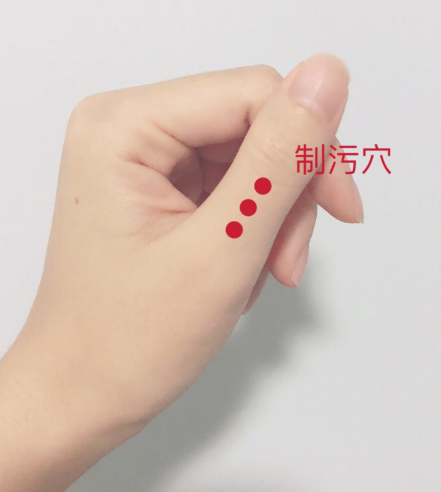
Location: The center of the back of the thumb, at the first segment, a total of three points.
Indications: Chronic ulcers, malignant tumors that bleed continuously after surgery, and do not heal.
Needling Method and Application: Use a three-edged needle to draw out black blood for immediate effect.
9、Sanjia Point paired with Zusanli for Treating Deafness.
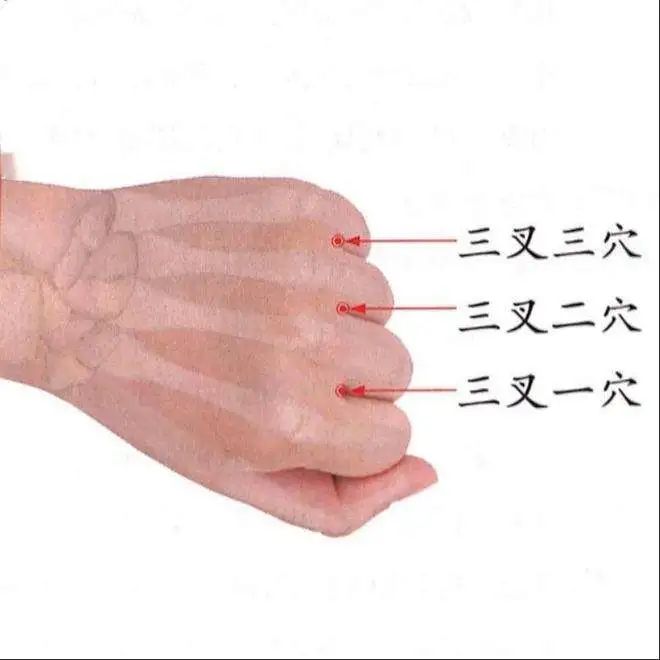
Sanjia One Point
Location: At the central point of the fork between the index and middle fingers.
Anatomy: Contains the radial nerve superficial branch, lung branch nerve, and kidney’s accessory nerve.
Point Selection: Located at the central point of the fork between the index and middle fingers.
Meridian: Enters the kidney meridian.
Indications: Keratitis, eye strain, lumbar pain, sciatica, brow bone pain, swelling pain, optic nerve atrophy, hemiplegia, atrophy.
Needling Method: Directly insert 2 inches. Insert from the fork to the ends of the metacarpal bones. Insert from the fork after making a fist.
Needling Sensation: Localized aching and distending electric sensation.
Distinction: Although Dong’s Sanjia point is the same as the eight evil points of the extraordinary meridians, its indications differ completely from the eight evils. The needling method is also different; the eight evils use a three to five tenths needle or three-edged needle for bloodletting, while Dong’s Sanjia point is directly inserted 2 inches, which is different from the eight evils. Readers should carefully distinguish.
Explanation: The Sanjia One, Two, and Three points are not listed in Dong Gong’s book, but were included by Master Hu in his compilation of Dong’s practical acupuncture extraordinary points. The Sanjia points are key points with extraordinary effects passed down by Dong Gong. There are three Sanjia points, each entering different meridians, and they have the function of adjusting and supplementing, making them frequently used key points by Dong Gong.
Sanjia Two Point
Location: At the central point of the fork between the middle and ring fingers.
Anatomy: Contains the ulnar nerve hand branch, spleen nerve, and liver branch nerve.
Point Selection: Located at the central point of the fork between the middle and ring fingers.
Meridian: Enters the spleen and liver meridians.
Point Nature: Strengthens the spleen, invigorates the channels, and resolves stasis.
Indications: Pancreatitis, splenomegaly, hemiplegia, sciatica, numbness of hands and feet, weak liver.
Needling Method: Directly insert 2 inches. Insert from the fork to the upper edge of the metacarpal bones. Insert from the fork after making a fist.
Needling Sensation: Localized aching and distending electric sensation.
Distinction: Although this point is located the same as the eight evils (extraordinary meridian points), its indications and needling methods differ. Please pay attention to the distinction.
Experience:
(1) The Sanjia One, Two, and Three points, when needled together, greatly assist in recovery from fatigue during colds. The Sanjia points, like Dong’s extraordinary points such as Shen’er point, Shui Jin, and Tong Kidney points, have the function of supplementing points, not only treating diseases but also having the function of adjusting qi and blood. Those with a weak constitution can select Shen’er point and Sanjia points for needling.
(2) Each Sanjia point has its own meridian, and when used clinically, it is best to pair with the appropriate meridian points for better results.
Sanjia Three Point
Location: At the central point of the fork between the ring and little fingers.
Anatomy: Contains the ulnar nerve hand branch and kidney nerve.
Point Selection: Located at the central point of the fork between the ring and little fingers.
Meridian: Enters the kidney meridian.
Point Nature: Nourishes the kidney, relieves pain, and promotes urination.
Indications: Dizziness, sciatica, long bone spurs, lumbar pain, kidney inflammation, kidney disease edema, severe colds.
Needling Method: Directly insert 2 inches. Insert from the fork to the upper edge of the metacarpal bones. Insert from the fork after making a fist.
Needling Sensation: Localized aching and distending electric sensation.
Distinction: Although this point is located the same as the eight evils (extraordinary meridian points), its indications and needling methods differ completely.
Experience:
(1) The Sanjia Three point enters the kidney meridian, thus in the five elements it belongs to water. Those with reduced vision often have kidney water deficiency, as the liver is wood and governs the eyes. Therefore, supplementing kidney water nourishes liver wood, which is effective for the eyes.
(2) After needling the Sanjia Three point, it can also be paired with the wrist Shun point to form Dong’s T-shaped needling method, further enhancing the effect.
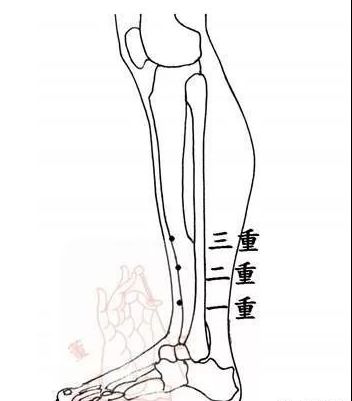
Three Heavy Points
Location: Two inches directly above the second heavy point.
Anatomy: Contains the lateral sural cutaneous nerve, heart branch nerve, lung branch nerve, and spleen nerve.
Point Selection: Located two inches directly above the second heavy point.
Meridian: Enters the heart, liver, spleen, and lung meridians.
Point Nature: Breaks qi, moves blood, and eliminates stasis.
Indications: Same as the first heavy point.
Needling Method: Directly insert 1-2 inches. Use a three-edged needle for bloodletting.
Needling Sensation: Localized aching and distending electric sensation.
Explanation: The first, second, and third heavy points can be needled simultaneously, forming a straight reverse horse needle method, which has the function of moving qi, breaking blood, and calming the spirit. Especially when paired with needling techniques, it can accelerate the therapeutic effect.
Experience:
(1) The gynecological points and three heavy points can be paired with the Tianying needle method to treat uterine fibroids.
(2) The shoulder, middle, and upper branches, along with the three heavy points, can treat breast tumors.
(3) The three heavy points, paired with the Dizong point and Muliu point, can treat tongue stiffness and speech difficulties, as the three heavy points have a strong effect on the brain, improving brain cells.
(4) For lack of concentration and memory decline, needling the three heavy points can be effective.
(5) Bloodletting at the three heavy points can treat large neck lumps and prostate enlargement (requires pairing with the finger Dajian, Waijian, and Sister Three points).
10、Lateral Sanli and Lateral Lower Sanli for Treating Trigeminal Neuralgia Have Remarkable Effects, Repeatedly Verified
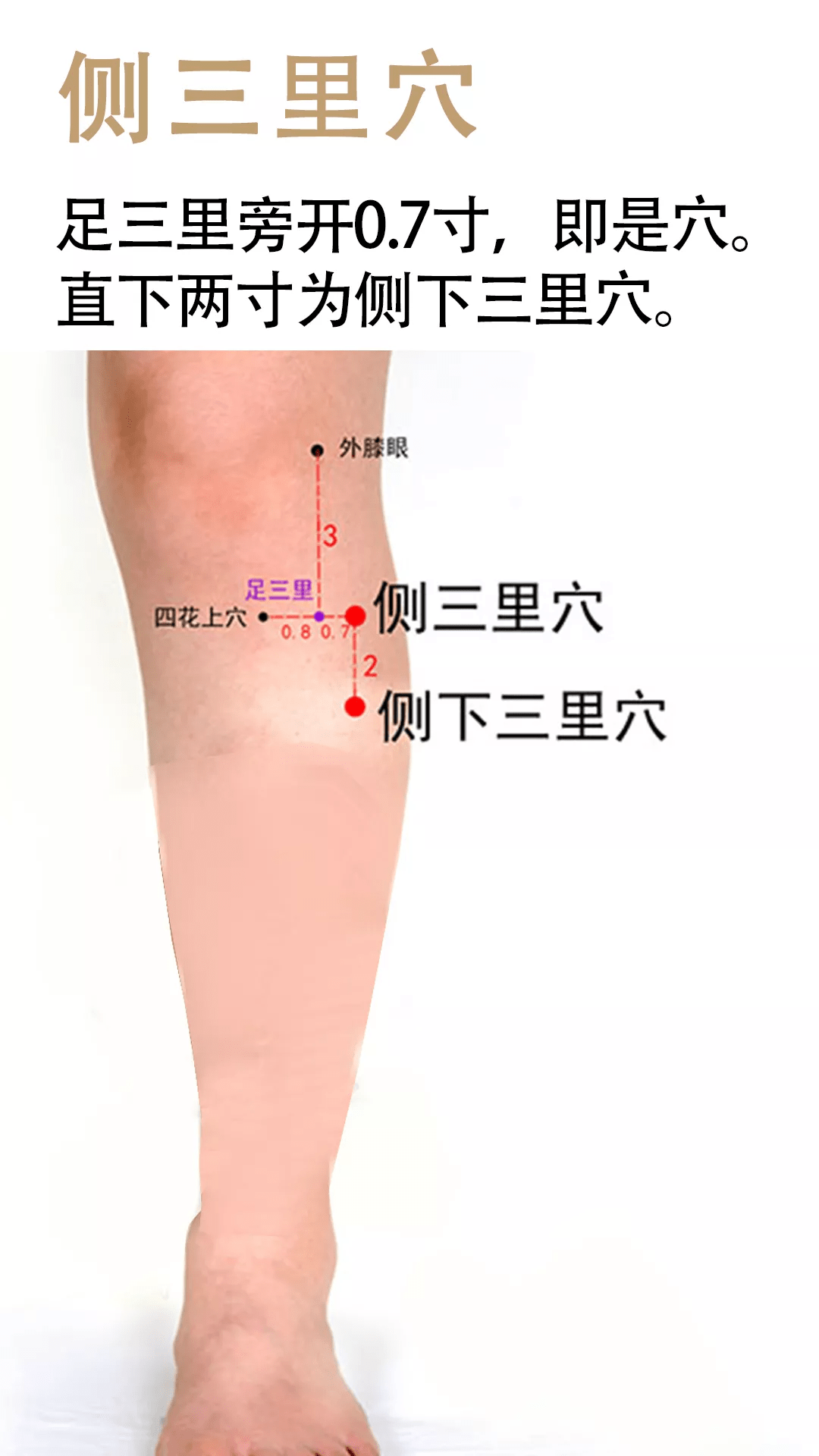
Location: Lateral Sanli point is located 2.5 inches outward from the upper Huahua point, which is 1.5 inches outside the foot Sanli point of the fourteen meridians.
Anatomy: Contains the lateral sural cutaneous nerve, dental nerve, and lung branch nerve.
Point Selection: Located on the anterior edge of the fibula, 2.5 inches outward from the upper Huahua point.
Meridian: Enters the heart and lung meridians.
Point Nature: Invigorates blood, dispels stasis, reduces inflammation, and alleviates pain.
Indications: Toothache, facial nerve pain, trigeminal neuralgia, intercostal neuralgia, appendicitis pain.
Needling Method: Directly insert 1-1.5 inches.
Needling Sensation: Localized aching and distending electric sensation.
Experience: This point, along with the external three points and three heavy points, can be referred to as the outer side of the lung area. If there are any abnormal colors or conditions, bloodletting can be performed here to treat head and face, as well as lung and chest-related diseases.
Explanation: This point is effective for treating migraines, thyroid enlargement, and sublingual swelling, similar to the functions of the three heavy points. It can be alternated with the three heavy points and Sima point for good results.
Point Pairing:
(1) Needling this point can be paired with the Huahua point for bloodletting, which is effective for treating tooth pain.
(2) This point paired with Linggu and Xinmen points is effective for treating fullness below.
(3) This point paired with the three heavy points can treat parotitis, and bloodletting can also be performed at the disease site.
One Needle Cures Shoulder Periarthritis
 The principle of acupuncture treatment for shoulder periarthritis is to combine syndrome differentiation treatment with meridian treatment, but some special effective points should not be overlooked.1. Yujie, Waiguan: Effective for pain along the scapula and external rotation obstacles, can be alternated between left and right hands;2. Yanglingquan, Sanli Xia (1 inch below Zusanli): Effective for pain primarily on the outer side of the scapula and internal rotation obstacles;3. Tinggong, Yanglao: Effective for those unable to raise their arms.When needling these points, patients can gently move the affected limb outward, inward, and upward. Some patients may see immediate effects, either pain relief or slight increase in range of motion. I once treated a 50-year-old patient with shoulder periarthritis (history of 1 year, ineffective treatment from various methods, severe pain) using these three groups of points, needling only five points, and after 11 sessions, the condition improved significantly.Appendix:
The principle of acupuncture treatment for shoulder periarthritis is to combine syndrome differentiation treatment with meridian treatment, but some special effective points should not be overlooked.1. Yujie, Waiguan: Effective for pain along the scapula and external rotation obstacles, can be alternated between left and right hands;2. Yanglingquan, Sanli Xia (1 inch below Zusanli): Effective for pain primarily on the outer side of the scapula and internal rotation obstacles;3. Tinggong, Yanglao: Effective for those unable to raise their arms.When needling these points, patients can gently move the affected limb outward, inward, and upward. Some patients may see immediate effects, either pain relief or slight increase in range of motion. I once treated a 50-year-old patient with shoulder periarthritis (history of 1 year, ineffective treatment from various methods, severe pain) using these three groups of points, needling only five points, and after 11 sessions, the condition improved significantly.Appendix:

1. Extraordinary Points – One needle cures shoulder periarthritis at the tender point, instruct the patient to cough three times before needling, a strong aching and distending sensation occurs while simultaneously moving the affected shoulder, located 8 inches above Neiguan, one on each side, a very effective ancestral method.2. Tiaoshan Point for Shoulder Periarthritis: One needle famous overseas.Tiaoshan Point is both Tiaokou Point and Chengshan, one needle for two points.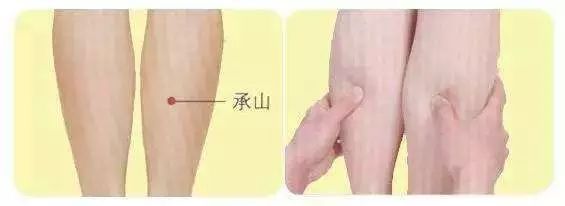 Why can Tiaoshan Point treat shoulder periarthritis? The Tiaokou and Chengshan points belong to the foot Yangming stomach meridian and the foot Taiyang bladder meridian, respectively. The foot Yangming stomach meridian passes through the hollow of the shoulder and connects with the Du meridian at Dazhui, intersecting with the foot Taiyang bladder meridian at the shoulder, so the qi of both points ascends and intersects at the shoulder, thus having extraordinary effects in treating shoulder periarthritis.From ancient texts, we can also find important discussions on treating upper diseases from below, treating lower diseases from above, treating internal diseases from outside, and treating external diseases from inside, treating left diseases from right, and treating right diseases from left. The “Su Wen: Five Constant Regulations” states: “If the qi is reversed, the disease is above, treat from below; if the disease is below, treat from above.” The “Ling Shu: End and Beginning” states: “If the disease is above, treat from below; if the disease is below, treat from above.” The rise and fall of qi is the basic form of movement of the body’s qi mechanism. The so-called “rise and fall, entry and exit, there is no organ that does not have it” (“Su Wen: Six Subtle Principles”), thus in treatment, it forms the principle of treating upper diseases from below and lower diseases from above.Any method that uses medication or acupuncture to treat upper diseases from below, or to treat lower diseases from above, falls under the category of treating upper diseases from below and lower diseases from above. This is established under the guidance of the holistic concept based on the regulation of the body’s meridians, organs, and the rise and fall of qi, differing from the usual method of guiding treatment based on the disease location.3. Extraordinary Effect Points for Shoulder PeriarthritisAlthough shoulder periarthritis can heal itself over time, the patient’s suffering is unbearable. I have named a point for shoulder periarthritis, located 1.5 inches below Zusanli. The patient lies supine, using a 3-inch needle on the same side, with the needle tip floating between the tibia and fibula, twisting the needle for 10 minutes, with the best sensation transmitted to the foot. Instruct the patient to move the affected shoulder, leaving the needle for 30 minutes. Basic treatment can lead to recovery in one session.I have used this method clinically for a long time with excellent results. Colleagues may try it. Additionally, this point is also effective for various types of low back pain, just with slight adjustments in technique: for low back pain, the needle tip should be upward and clockwise for supplementation, counterclockwise for draining. Give it a try, everyone.4. Introduction of My Experience in Acupuncture Treatment for Shoulder Periarthritis Over the YearsThrough clinical exploration, I discovered the Jianling point [9 tenths below Yinlingquan], which has a 100% effective rate for treating shoulder periarthritis and a 96.7% cure rate. This method is innovative and has not been documented before, receiving accolades afterward. Reports have appeared in the “Tunjian Report” in the United States and the “Ming Pao” in Hong Kong, and I have received the first prize for major scientific and technological achievements in the city.The method is: twisting and lifting, obtaining qi is essential, and joint movement is optimal; treating the right side for the left, treating upper diseases from below.My personal experience: This method is more effective for early-stage shoulder periarthritis, with mild cases resolving in one session and severe cases in no more than three sessions. I generally leave the needle in for 15-30 minutes, but it must be combined with movement of the affected joint. Sometimes, for relapses or stubborn cases, pairing with the experience formula for shoulder periarthritis for a month yields excellent results.5. Rapid Treatment Method for Scapular PainRecently, I have treated six patients with scapular pain, and the results have been very good. I have compiled the methods for peer review.One patient had pain for over four months, with no improvement from medication, acupuncture, patches, or cupping. Another patient had pain for over two years, with no treatment yielding results. Four patients with acute attacks were treated the next day, one of whom was diagnosed with cervical spondylosis after an X-ray at the hospital, and treatment by the hospital doctor worsened the pain, leading to immobility of the neck. I used the following methods for treatment:1. Press the painful points corresponding to the chest and scapula on the affected side for 5-10 minutes;2. Press the healthy side’s Shizhe point for 5-10 minutes.Effect: Pressing the chest pain point stops the pain (from yin to yang, not sure if correct). Shizhe belongs to the lung meridian, governing qi and regulating the pulse (my understanding).All acute patients were cured in two sessions, three sessions for the four-month patient, and five sessions for the two-year patient, with no further pain (post-treatment pain attacks were significantly reduced compared to before).There are many methods for treating shoulder periarthritis; I have compiled some methods with fewer points and strong applicability, hoping to help everyone! Some methods I have personally tried and found to be quite miraculous! For example, finding the tender point of Yanglingquan on the opposite side, instructing the patient to cough three times before needling, a strong aching and distending sensation occurs while simultaneously moving the affected shoulder, with pain reduced by 80%. This case was treated two weeks ago for a patient with shoulder periarthritis lasting one year, completely cured after three sessions! Yanglingquan is one of the eight meeting points, and the effect is derived from this principle. Regardless of the treatment, any method that can quickly alleviate the patient’s suffering is a good method.Previous Articles:
Why can Tiaoshan Point treat shoulder periarthritis? The Tiaokou and Chengshan points belong to the foot Yangming stomach meridian and the foot Taiyang bladder meridian, respectively. The foot Yangming stomach meridian passes through the hollow of the shoulder and connects with the Du meridian at Dazhui, intersecting with the foot Taiyang bladder meridian at the shoulder, so the qi of both points ascends and intersects at the shoulder, thus having extraordinary effects in treating shoulder periarthritis.From ancient texts, we can also find important discussions on treating upper diseases from below, treating lower diseases from above, treating internal diseases from outside, and treating external diseases from inside, treating left diseases from right, and treating right diseases from left. The “Su Wen: Five Constant Regulations” states: “If the qi is reversed, the disease is above, treat from below; if the disease is below, treat from above.” The “Ling Shu: End and Beginning” states: “If the disease is above, treat from below; if the disease is below, treat from above.” The rise and fall of qi is the basic form of movement of the body’s qi mechanism. The so-called “rise and fall, entry and exit, there is no organ that does not have it” (“Su Wen: Six Subtle Principles”), thus in treatment, it forms the principle of treating upper diseases from below and lower diseases from above.Any method that uses medication or acupuncture to treat upper diseases from below, or to treat lower diseases from above, falls under the category of treating upper diseases from below and lower diseases from above. This is established under the guidance of the holistic concept based on the regulation of the body’s meridians, organs, and the rise and fall of qi, differing from the usual method of guiding treatment based on the disease location.3. Extraordinary Effect Points for Shoulder PeriarthritisAlthough shoulder periarthritis can heal itself over time, the patient’s suffering is unbearable. I have named a point for shoulder periarthritis, located 1.5 inches below Zusanli. The patient lies supine, using a 3-inch needle on the same side, with the needle tip floating between the tibia and fibula, twisting the needle for 10 minutes, with the best sensation transmitted to the foot. Instruct the patient to move the affected shoulder, leaving the needle for 30 minutes. Basic treatment can lead to recovery in one session.I have used this method clinically for a long time with excellent results. Colleagues may try it. Additionally, this point is also effective for various types of low back pain, just with slight adjustments in technique: for low back pain, the needle tip should be upward and clockwise for supplementation, counterclockwise for draining. Give it a try, everyone.4. Introduction of My Experience in Acupuncture Treatment for Shoulder Periarthritis Over the YearsThrough clinical exploration, I discovered the Jianling point [9 tenths below Yinlingquan], which has a 100% effective rate for treating shoulder periarthritis and a 96.7% cure rate. This method is innovative and has not been documented before, receiving accolades afterward. Reports have appeared in the “Tunjian Report” in the United States and the “Ming Pao” in Hong Kong, and I have received the first prize for major scientific and technological achievements in the city.The method is: twisting and lifting, obtaining qi is essential, and joint movement is optimal; treating the right side for the left, treating upper diseases from below.My personal experience: This method is more effective for early-stage shoulder periarthritis, with mild cases resolving in one session and severe cases in no more than three sessions. I generally leave the needle in for 15-30 minutes, but it must be combined with movement of the affected joint. Sometimes, for relapses or stubborn cases, pairing with the experience formula for shoulder periarthritis for a month yields excellent results.5. Rapid Treatment Method for Scapular PainRecently, I have treated six patients with scapular pain, and the results have been very good. I have compiled the methods for peer review.One patient had pain for over four months, with no improvement from medication, acupuncture, patches, or cupping. Another patient had pain for over two years, with no treatment yielding results. Four patients with acute attacks were treated the next day, one of whom was diagnosed with cervical spondylosis after an X-ray at the hospital, and treatment by the hospital doctor worsened the pain, leading to immobility of the neck. I used the following methods for treatment:1. Press the painful points corresponding to the chest and scapula on the affected side for 5-10 minutes;2. Press the healthy side’s Shizhe point for 5-10 minutes.Effect: Pressing the chest pain point stops the pain (from yin to yang, not sure if correct). Shizhe belongs to the lung meridian, governing qi and regulating the pulse (my understanding).All acute patients were cured in two sessions, three sessions for the four-month patient, and five sessions for the two-year patient, with no further pain (post-treatment pain attacks were significantly reduced compared to before).There are many methods for treating shoulder periarthritis; I have compiled some methods with fewer points and strong applicability, hoping to help everyone! Some methods I have personally tried and found to be quite miraculous! For example, finding the tender point of Yanglingquan on the opposite side, instructing the patient to cough three times before needling, a strong aching and distending sensation occurs while simultaneously moving the affected shoulder, with pain reduced by 80%. This case was treated two weeks ago for a patient with shoulder periarthritis lasting one year, completely cured after three sessions! Yanglingquan is one of the eight meeting points, and the effect is derived from this principle. Regardless of the treatment, any method that can quickly alleviate the patient’s suffering is a good method.Previous Articles:
- Learn by Looking! Summary of Acupuncture Effective Points (Pure Practical Content)
- Secret Transmission of Single Needle Counteracting the Three Talents Needle

